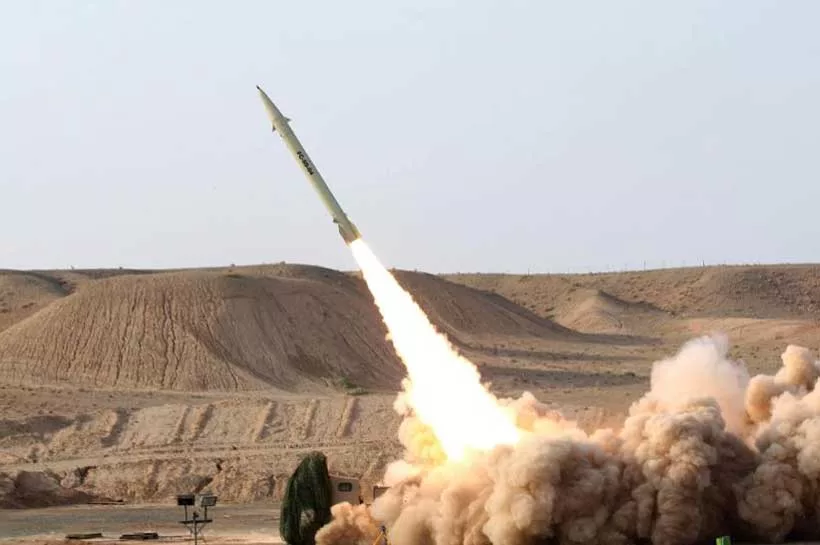Now, following the latest militia attack on Tower 22, the US military outpost in Jordan, it is thrusting President Biden into the greatest crisis of his presidency. This is not what the president or his top aides expected or hoped for. Before this, the US and Iran had avoided directly confronting each other. The US has attacked Iranian proxy forces in Yemen, Syria, and Iraq, while Iran-backed militias have targeted the US and its allies in Iraq and Syria. Tehran has also struck what it dubbed as anti-Iran groups in Iraq, Syria, and Pakistan. Since the beginning of the Gaza war, it was the first time U.S. troops were killed by enemy attacks in the Middle East, increasing significant pressure on Biden and risking a new war in an election year.
The historical rivalry between Iran and the US traces back to political events, notably the 1953 CIA-backed coup that removed Iran’s Prime Minister Mohammad Mosaddegh. Subsequently, the relations got more strain during the post-1979 Iranian revolution and the US Embassy hostage crisis. Ongoing geopolitical challenges, like nuclear programs and regional influence, has also stoked the flare.
Iran has been consistently opposing the presence of U.S. forces in the Middle East. In retaliation, the Iranian Islamic Revolutionary Guard Corps(IRGC) started building an extensive network of anti-Western and anti-Israel militias in Lebanon, Gaza, Iraq, Syria, and Yemen over several decades. Iran provided training and funding these Shiite militia groups, and they are more accountable to the authorities of the IRGC in Tehran than to their respective governments.
The Hamas attack against Israel on October 7th, 2023, was the first step to unfold the Shia domination maneuver in the Middle East. Then came Hezbollah’s endeavor to displace 70,000 Israelis with its attack on northern Israel, followed by tens of dozens of IRGC-sponsored militia strikes on U.S. forces in Iraq, Syria, and the Houthi’s attacks against commercial and military shipping in the Red Sea and Gulf of Aden.
In Iraq, Tehran wields significant influence on various Shiite militias closely tied to the IRGC. These include Kataib Hezbollah, Harkat al Najuba, Kataib Sayyid al Shuhada, and recently the Islamic Resistance in Iraq. Iraq is also home to IRGC-funded Badar Organization, as well as Asaib Ahl al Haq. The US has deployed some 2500 troops at various bases in Iraq. In Syria, Iran has a direct presence with the Quds Force, an elite unit of the IRGC. The forces deployed after the 2011 uprising to support the regime of President Bashar al-Assad. Syria also hosts the Shiite militia groups named Zainabiyoun and Fatemiyoun Brigades. The US has 800 forces in Syria as part of a mission to defeat ISIS.
In Jordan, about 3000 U.S. troops are stationed and facilitate strategic tactical advantages like intelligence, surveillance, target acquisition, and reconnaissance missions for Syria and Iraq. Lebanon is home to the most powerful Shiite militia force, Hezbollah. Hezbollah has war experience from the Iraq-Iran war. Yemen is mostly controlled by the Shiite militia Houthi. Hamas in Gaza is a Sunni militia group backed by Shia Iran. 80% of its budget comes from Iran. On the other hand, the Gulf states are also home to US troops. The US has 13,500 troops in Kuwait, 10,000 US Force in Qatar, more than 2700 troops in Saudi Arabia, and 3500 US personnel in the UAE. Turkey has 1465 US troops at Incirlik air base, and Bahrain hosts the Navy’s fifth Fleet. After Hamas’s incursion into Israel, Biden strengthened the US presence in the region, positioning additional air defense forces, two Aircraft carrier strike groups, and some 900 additional troops as a deterring posture.
Iran’s long-cherished strategic aim is to drive U.S. troops out from the Middle East, ultimately paving the way for Iran’s dominance in the region. Iran wants to play a decisive geopolitical and geostrategic role in the Middle East’s perspective. On the other hand, Biden is under tremendous pressure to hit back at Tehran. Republican presidential candidate Donald Trump criticized Biden for not responding to previous attacks and appeasement gestures through nuclear talks, recent prisoner swaps, and unfreezing Iran’s funds. The Biden administration has made a political blunder in offering unconditional support to Israel just after the Hamas raid. Again, Biden would be caught in another political blunder by directly retaliating against Iran. It has been a long-cherished desire by Netanyahu and his extremist cronies to drag the USA into a war against Iran and across the Middle East.
The US can’t ignore the ICJ ruling that Israel must stop genocidal activities in Gaza. Moreover, Palestine and Iran issues have risked the US allies to give the USA carte blanche, especially France, Germany, Italy, and Gulf states. To counter the asymmetric attrition of the war of Iran and its proxy forces, the US needs a formidable alignment among its allies. Again, Israel’s atrocities may justify Russia’s invasion of Ukraine and furthermore assist anti-democratic geopolitics on the rise. It would be wise for the Pentagon to address the root causes of Palestine and put forward the two-state solution to the incumbent US legislative machinery.
